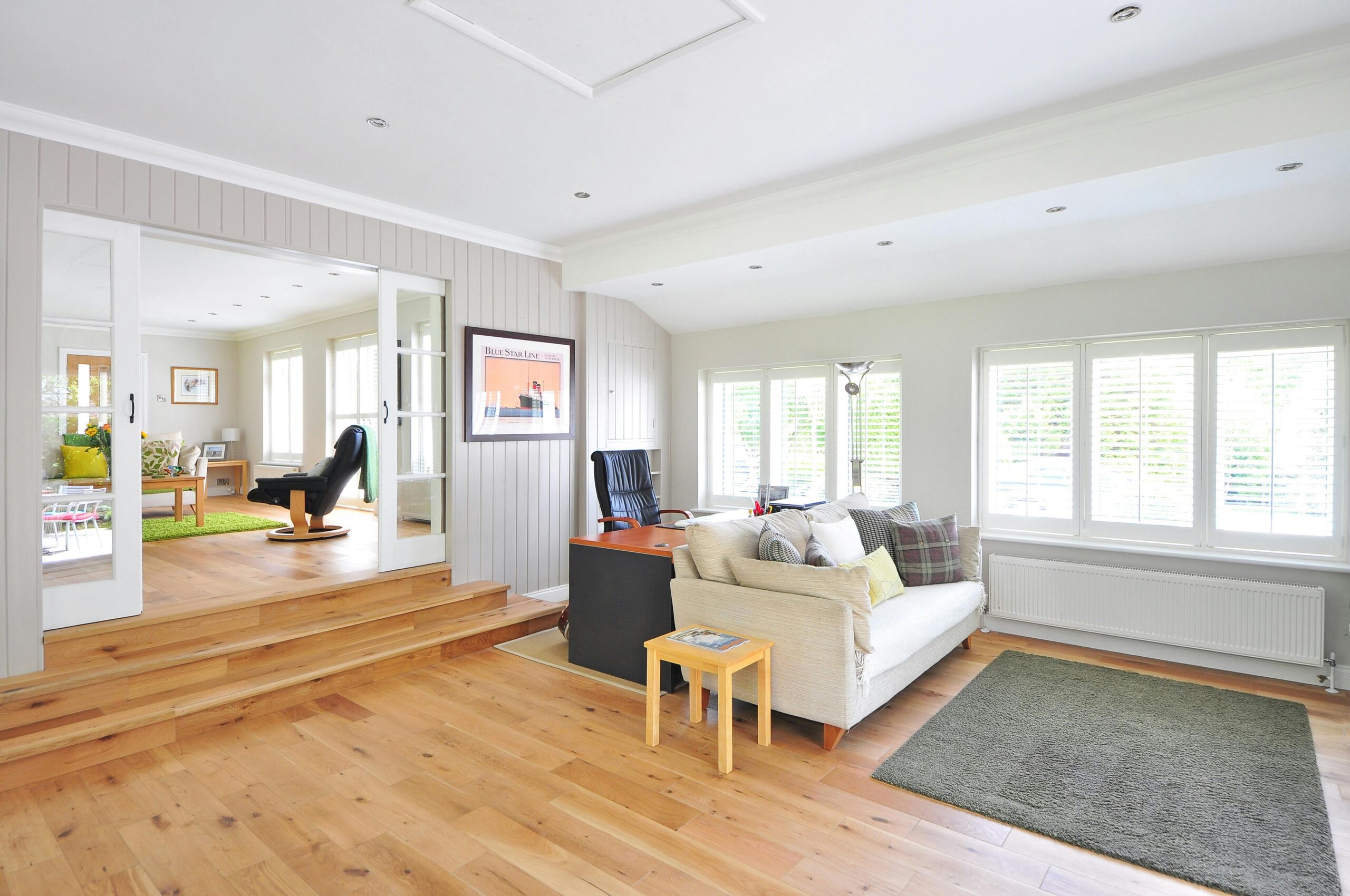Hardwood floors add timeless beauty and value to homes, but over time, even the most durable wood surfaces show signs of wear and damage. Refinishing hardwood floors can restore their original luster and extend their lifespan significantly. This article explores the complete process of hardwood floor restoration, from initial assessment to final coating. We’ll break down the typical costs to refinish hardwood floors, explain the step-by-step process for those considering a DIY approach, and help you determine whether to tackle the project yourself or hire a professional.
Understanding the Refinishing Process
The hardwood floor refinishing process involves several critical steps that transform worn, scratched wood into smooth, gleaming surfaces. It begins with a thorough assessment of your floor’s condition to determine if it can be refinished or needs replacement. Most solid hardwood floors can be refinished multiple times throughout their lifespan. The process starts with clearing the room completely and preparing the space by sealing vents and doorways to contain dust. Next comes the crucial sanding phase, where specialized equipment removes the old finish and a thin layer of wood to expose fresh material. This sanding typically requires multiple passes with progressively finer-grit sandpaper to achieve a smooth surface. After sanding, all dust must be meticulously removed before staining (if desired) and applying the protective topcoat. The entire process typically takes 3-5 days, including drying time between coats.
Cost Factors for Hardwood Floor Refinishing
When homeowners search for a sand wood floors estimate, they’ll find prices ranging from $3 to $8 per square foot, with an average project costing between $1,000 and $2,400 for a standard-sized room. Several factors influence this cost. The size of the area is the most obvious factor—larger spaces require more materials and labor. The floor’s condition significantly impacts pricing, as floors with deep scratches, water damage, or structural issues require more intensive preparation. The type of wood also matters; some exotic hardwoods require specialized techniques and finishes. Additionally, geographic location affects labor rates, with urban areas typically commanding higher prices than rural regions. If you need furniture moving, floor repairs, or stain application, these services add to the total cost. Finally, the type of finish you select—whether water-based, oil-based, or high-end products like Swedish finish—impacts both material costs and application time. When requesting estimates, having professionals assess your specific situation in person typically yields the most accurate pricing for your refinish hardwood floors cost.
DIY Refinishing: What to Know
For homeowners with moderate to advanced DIY skills, refinishing hardwood floors can be a rewarding project that saves considerable money. The equipment needed includes a drum or orbital sander (usually rented from hardware stores), an edger for corners, sandpaper in various grits, a shop vacuum, application tools for finish, and appropriate safety gear. The DIY route typically costs $500-900 for a medium-sized room, representing significant savings compared to professional services. However, first-timers should understand the learning curve involved. The most challenging aspects include operating the drum sander without creating gouges or uneven surfaces, managing the substantial dust production, and achieving a consistent finish application. Many homeowners find the physical demands surprising—refinishing floors requires hours of bending, kneeling, and managing heavy equipment. If you’re considering the DIY approach to hardwood floor restoration, AskHomey recommends starting with smaller, less visible rooms to gain experience before tackling main living areas.
When to Hire Professionals
Professional floor refinishers bring experience, specialized equipment, and efficiency to your hardwood floor restoration project. Their expertise becomes particularly valuable when dealing with intricate patterns like herringbone or parquet floors, when working with expensive or rare wood species, or when significant repairs are needed. Professionals can identify and address structural issues that might go unnoticed by untrained eyes. They also have access to commercial-grade equipment that captures more dust and professional-grade finishes that may not be available to the general public. While the upfront cost is higher than DIY, professionals typically complete projects more quickly and with more consistent results. The value of warranty protection also deserves consideration, as reputable companies stand behind their work, offering peace of mind that DIY projects cannot provide. For many homeowners, the investment in professional service proves worthwhile when considering the long-term value and appearance of their hardwood floors.
Making the Final Decision
The choice between DIY refinishing and hiring professionals ultimately depends on your specific circumstances. Consider your skill level, available time, physical capability, and budget constraints. For simple refreshes of moderately worn floors in smaller spaces, DIY refinishing can be appropriate. For valuable homes, historically significant properties, or when dealing with extensive damage, professional expertise typically yields superior outcomes. Many homeowners find a middle ground by handling the preparatory work themselves and hiring professionals for the critical sanding and finishing steps. Whatever approach you choose, proper maintenance after refinishing will extend the life of your newly restored floors, protecting your investment for years to come.
For more tips and to connect with reliable home service professionals, follow AskHomey on Facebook and Instagram.



